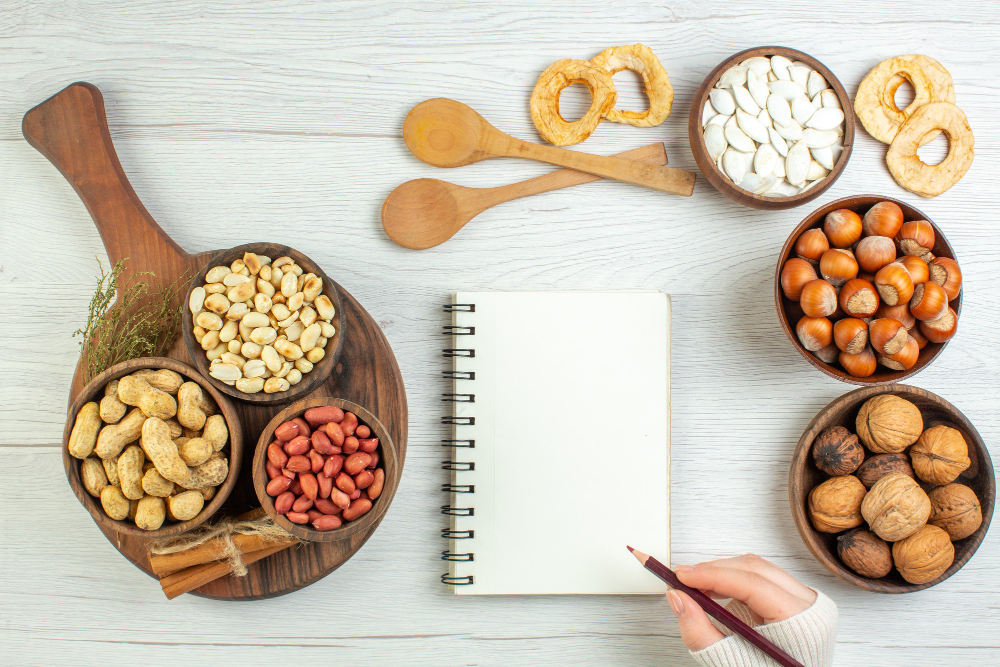Ever wonder why some people seem to have boundless energy, glowing skin, and a rock-solid immune system? The secret might just be in their diet—specifically, their love for health nuts.
Nuts are tiny powerhouses packed with nutrients, healthy fats, and protein. But not all nuts are created equal, and not everyone knows how to use them effectively. Whether you’re a fitness enthusiast, a busy professional, or just someone looking to eat healthier, this guide will show you how to make nuts a smart, delicious, and impactful part of your diet.
Why Go Nuts for Nuts?
Nuts have been a staple in human diets for thousands of years, and modern science backs their benefits:
✅ Heart Health – Studies show that eating nuts regularly can lower bad cholesterol (LDL) and reduce heart disease risk (Harvard Health, 2021).
✅ Weight Management – Despite being calorie-dense, nuts promote satiety, helping curb overeating (Mayo Clinic, 2022).
✅ Brain Boost – Walnuts, in particular, are rich in omega-3s, which support cognitive function (NIH, 2020).
✅ Longevity – Research links nut consumption to a longer lifespan (New England Journal of Medicine, 2013).
But which nuts should you eat, and how much is too much? Let’s crack into the details.
The Best Nuts for Your Health (Ranked)
Not all nuts offer the same benefits. Here’s a breakdown of the top performers:
1. Almonds – The All-Rounder
-
Key Benefits: High in vitamin E (great for skin), magnesium (reduces muscle cramps), and fiber.
-
Best For: Snacking, almond butter, or as a milk alternative.
-
Serving Size: 1 oz (about 23 almonds).
2. Walnuts – The Brain Booster
-
Key Benefits: Highest in omega-3s, anti-inflammatory, supports mental health.
-
Best For: Salads, oatmeal, or baking.
-
Serving Size: 1 oz (about 14 halves).
3. Pistachios – The Weight-Loss Helper
-
Key Benefits: Lower in calories, high in protein, and rich in antioxidants.
-
Best For: Snacking (in-shell slows eating).
-
Serving Size: 1 oz (about 49 kernels).
4. Cashews – The Heart Helper
-
Key Benefits: Good source of iron and zinc, supports immune function.
-
Best For: Stir-fries, vegan cheeses, or as a creamy snack.
-
Serving Size: 1 oz (about 18 nuts).
5. Brazil Nuts – The Selenium Superstar
-
Key Benefits: Just one nut provides your daily selenium needs (critical for thyroid health).
-
Best For: Occasional use (don’t overdo it—too much selenium is harmful).
-
Serving Size: 1-2 nuts per day.
How to Eat Nuts the Right Way
Nuts are healthy, but mindless munching can lead to excess calories. Here’s how to enjoy them smartly:
✔ Portion Control – Stick to a small handful (1 oz) per serving.
✔ Go Raw or Dry-Roasted – Avoid oil-roasted or salted varieties.
✔ Soak for Better Digestion – Soaking nuts overnight reduces phytic acid, improving nutrient absorption.
✔ Pair Wisely – Combine with fruits (apples + almond butter) or yogurt for balanced nutrition.
Common Myths About Nuts—Busted!
❌ “Nuts make you fat.”
✅ Truth: While calorie-dense, studies show nut eaters tend to have lower body weight due to increased satiety.
❌ “Peanuts aren’t healthy.”
✅ Truth: Peanuts (technically legumes) are still nutritious—just opt for natural peanut butter without added sugars.
❌ “All nut butters are equal.”
✅ Truth: Many commercial nut butters contain added oils and sugars. Always check labels!
Real-World Success Stories
-
Sarah, 34 – Switched from chips to almonds and lost 12 lbs in 3 months.
-
Mark, 50 – Added walnuts to his diet and saw improved cholesterol levels in 8 weeks.
-
Priya, 28 – Used cashew cream as a dairy substitute and resolved her bloating issues.
Final Thoughts: Time to Go Nuts?
Nuts are one of the easiest, tastiest ways to upgrade your diet. Whether you sprinkle them on salads, blend them into smoothies, or enjoy them as a snack, these little powerhouses can make a big difference in your health.










